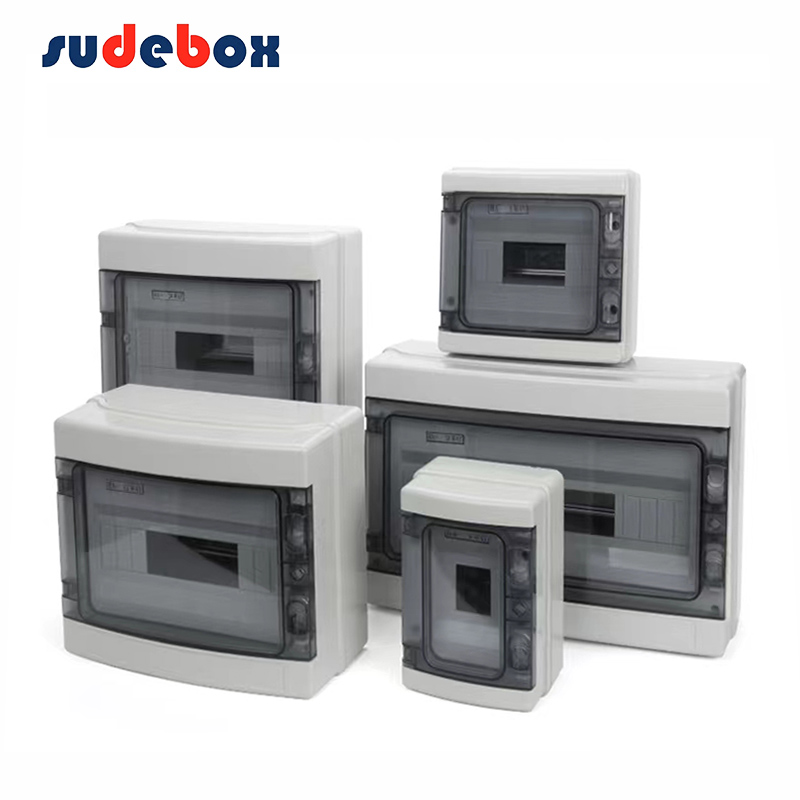Post Time: 2024-03-14 11:15:26
Abstract: The predominant structural form in residential construction projects is often shear wall structures. Before the walls are formed, electrical junction box are pre-fixed onto the reinforcement bars of the shear walls. Within this context, developers and small property owners have raised higher requirements for the quality and aesthetics of electrical pre-embedment. By optimizing construction processes, guiding construction work, and reasonably selecting and optimizing electrical pre-embedding processes under different conditions, costs can be saved. Comparative summaries of construction techniques are beneficial for subsequent construction processes, aiding in the selection of techniques, reducing rework waste, and improving pre-embedded quality.

Keywords: Shear wall, Junction box pre-embedding, Construction measures
Overview of Installing Junction Box Pre-Embedment in Shear Walls
Electrical construction is an integral component of building construction, and the quality of its construction directly affects the functionality of the building. In a project undertaken by our company, the client required that the surfaces of indoor switches, sockets, and low-voltage junction boxes be flush with the plastered surface of the wall. Our company employed construction methods involving pre-embedding within the shear walls during the main structural construction phase. This technique ensures the accurate positioning of junction boxes and that their openings are flush with the plastered wall surface. It includes construction processes such as pre-embedding during structural construction, binding and fixing, cleaning after formwork removal, junction box positioning and installation, and surrounding sealing. This method provides a certain adjustment space for inaccurate junction box positioning and allows for better control of the protrusion size of junction boxes, enhancing overall installation and visual effects. It not only meets the client’s requirements but also improves project quality and reduces construction costs.
Methods for Junction Box Pre-Embedment in Shear Walls
2.1 Different Pre-Embedment Conditions
Electrical conduit junction boxes must be embedded within the building structure, with the latter serving as their carrier. Different building structural forms and handover standards will affect the choice of embedding methods. Common factors influencing embedding include different building structural forms and handover standards such as shear wall handover without plaster, shear wall handover with plaster, and handover with post-brick wall plastering. These factors will affect the choice of embedding methods in various ways. With the advancement of formwork engineering technology, more and more construction projects are using lightweight standardized formwork. One major advantage of standardized formwork compared to traditional wooden formwork is better visual quality after formwork removal, achieving the required floor flatness for handover without plastering. Electrical conduit junction box embedding for handover without plaster can be divided into structural plastering and non-plastering forms. Regardless of the building structural form, the ultimate requirement is for the junction box opening to be flush with the wall surface, with no deformation, no tilting, and uniform height spacing for continuous junction boxes as per regulations.
2.2 Traditional Electrical Conduit Junction Box Embedding Techniques
In traditional electrical conduit junction box embedding techniques, there are simply two forms: shear wall and brick wall.
2.2.1 Traditional Shear Wall Electrical Conduit Junction Box Embedding
The traditional process for embedding electrical conduit junction boxes in shear walls is as follows: Material preparation according to drawings for hidden box processing ~ Positioning and installation of the bottom box ~ Laying and connecting pipelines ~ Cleaning junction boxes ~ Sealing junction box openings after formwork removal.
Material preparation according to drawings mainly refers to preparing bottom boxes, conduit pipes, and related accessories according to drawing specifications, such as PVC conduit pipes, junction boxes, end caps, JDG pipes for cross-wiring, etc.
Hidden box processing: Depending on actual needs, single, double, or triple junction boxes are made, with the internal female threads sealed with a circle of tape, then filled with sawdust or other waste material. The sawdust or other waste material needs to be packed in plastic bags before being stuffed into the junction box and tightly sealed with wide tape to prevent mortar from seeping in and causing blockages in the pipes.
Pipeline laying and connection: PVC pipe connections are glued, and during PVC pipe laying, attention must be paid to ensuring that the bending radius of the conduit pipe meets regulations. Metal pipes can be welded, threaded, or rigidly connected depending on material and diameter, with attention paid to grounding connections during metal pipe laying.
Junction box cleaning: After formwork removal, junction boxes are cleaned, and after cleaning, the junction box openings must be resealed to prevent secondary pollution from subsequent decorations.

tel
+13968715879